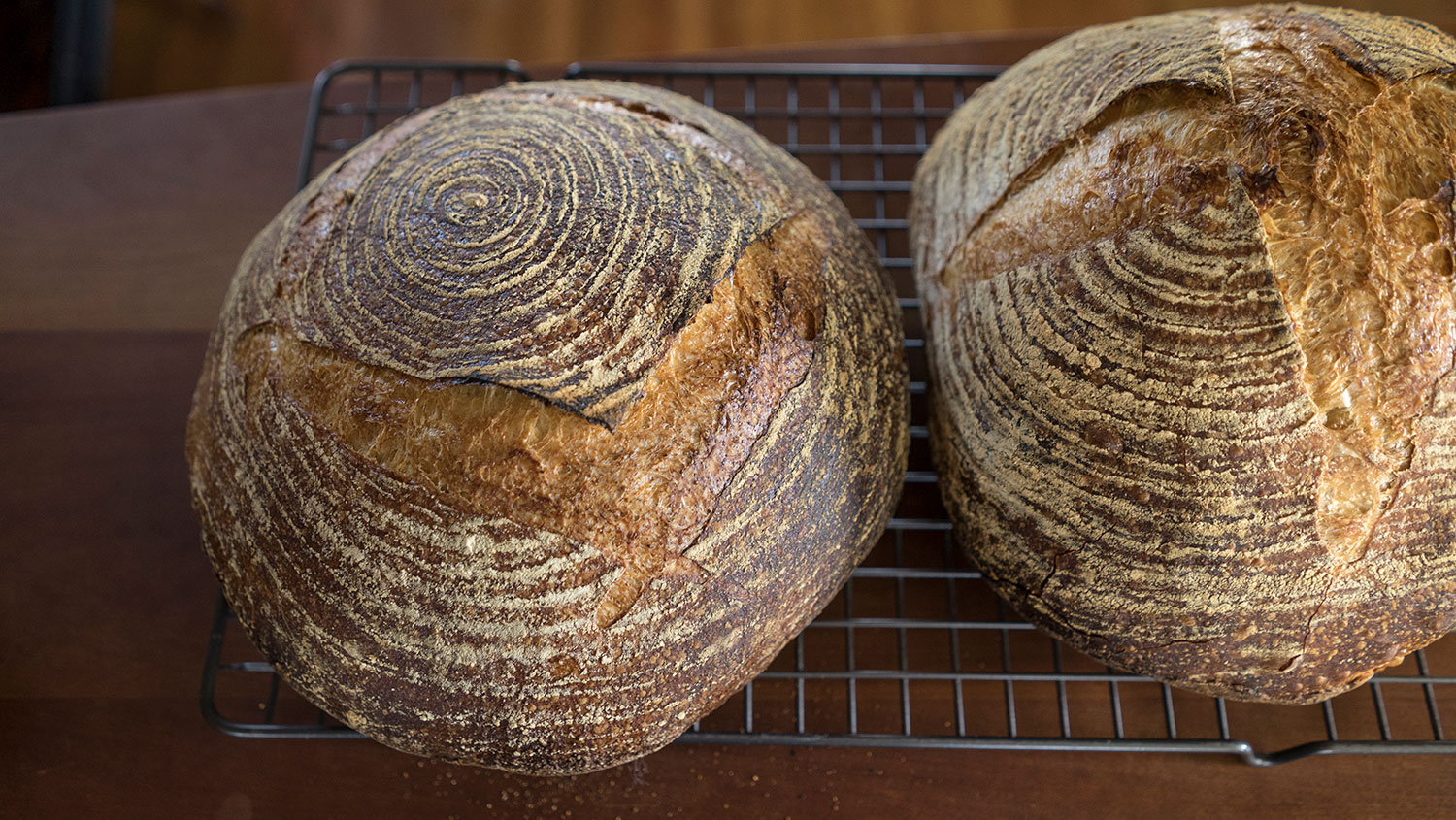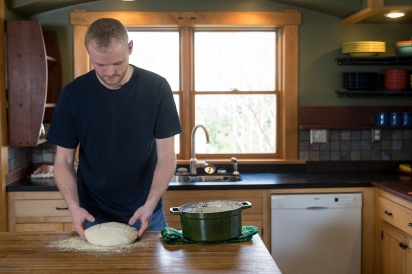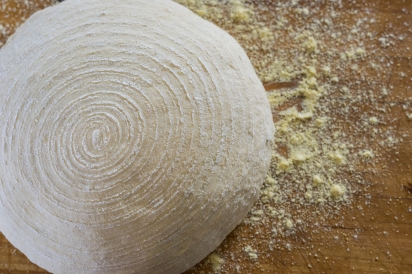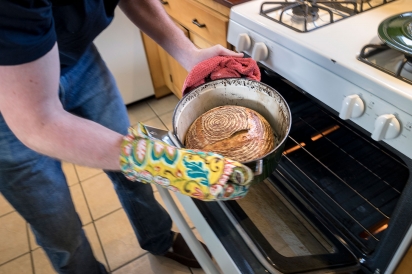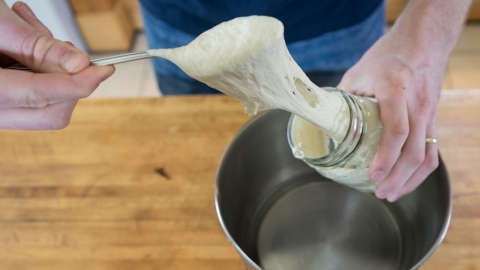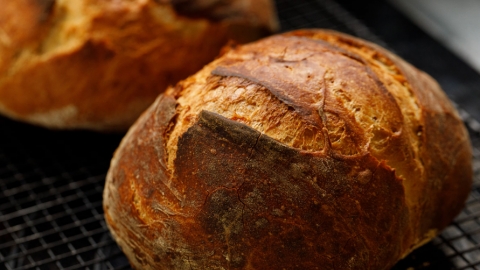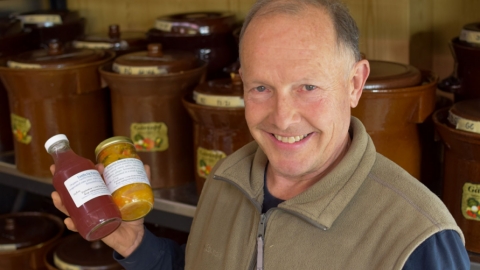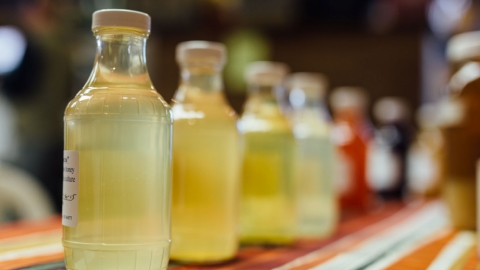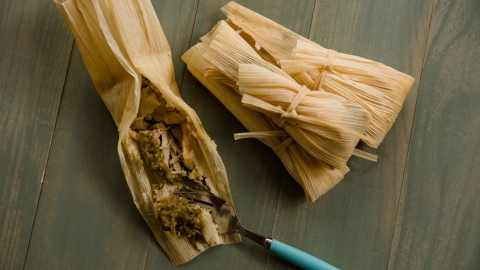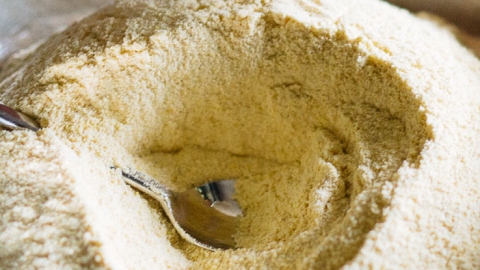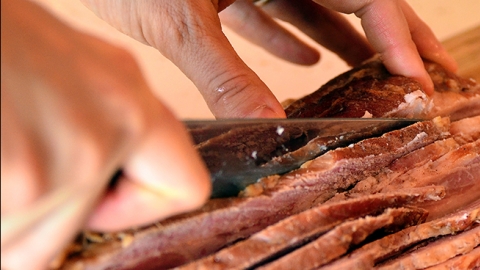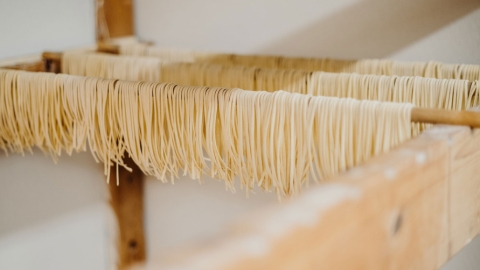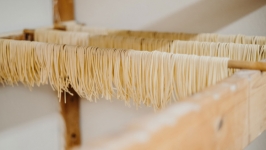Sourdough without sentiment: a writer’s approach to baking bread
Turning off the US 20 Bypass on my way home to Goshen, IN, it hit me.
Less than a half hour before I had been chatting with Lauren Barry, a baker whose bread at Kitsune restaurant was described by the Chicago Tribune as “just short of life-changing.” Barry now lives in South Bend. She’s in the process of opening The Elder Bread, a restaurant named after her 13-year-old sourdough starter, a yeast culture she maintains meticulously.
I am a home baker, a bread enthusiast with nowhere near as much experience as Barry and with far less discipline when it comes to maintaining a sourdough culture. But it wasn’t my inexperience that led me to say, to her obvious disapproval, that bakers shouldn’t think twice about getting rid of their cultures and starting over. It was because, as I realized on the ride home, I’m a writer first, then a baker.
Flour and Water
The first time I encountered a sourdough culture, I was up on 22nd Street—the countryside for those like me who live in the center of Goshen. My friend showed me a Mason jar his mother kept in the fridge. It was a wet mass of flour derived from a similar one she had received from her own mother, and which she uses to bake two loaves of bread every week.
Many families who bake sourdough have similar stories. Until the popularization of commercial yeast, not much more than a century ago, all bread was baked with yeast cultures. It wasn’t even called sourdough. It was just bread.
Today, however, baking sourdough is not just a family tradition. By mixing flour with water and allowing it to ferment, a new generation of bakers has reclaimed a baking method that could have become extinct.
Rising Popularity
The obvious reason for sourdough’s resurgence is its taste. The fermentation process adds acetic and lactic acids to a sourdough culture, giving the bread its tart flavors. These acids also prolong the loaf's freshness.
Whereas breads made with store-bought yeasts rise entirely on a strain of yeast within the species Saccharomyces cerevisiae, sourdough cultures become breeding grounds for wild yeasts found in kitchens, on bakers’ hands and in the flour itself. These are the strains I memorize on my car ride to work, yeasts such as Candida milleri, Hansenula anomala and Saccharomyces exiguus. As a culture is fed over days and weeks, months and years, and is passed from one generation to the next, its yeast makeup continually transforms.
Slowing Down
For me, baking sourdough was the next logical step after baking with commercial yeast. Fermentation has the appeal of slowing things down. That’s especially important now that an enormous portion of the bread we eat is mixed, baked and packaged in a matter of hours. Many people with difficulties digesting store-bought breads say they can comfortably eat sourdough.
Sourdough has its problems, though. It’s a slow process. Because I’m not a professional baker, I often don’t have the time or the foresight to feed it in the days before baking. It’s a lot easier to make dough with instant yeast and leave it in the fridge for a few days, where it will undergo a cold fermentation similar to true sourdough and slowly develop flavors that will make it delicious.
When I mentioned my timing problems to Barry, she told me to store my starter in the freezer, just as she does with her backup culture. That’s a common-sense solution, and I’ll do it in the future. But it doesn’t change how unsentimental I am about the cultures I’ve created. The first one I made, a combination of whole wheat and white flour, flourished for three months before I forgot about it in the back of the fridge. It became so blackened by alcohol buildup that the only place to put it was in the trash. Several of the cultures I’ve created since then I’ve thrown away with little more than an “oh well,” despite spending hours feeding them with cups and cups of expensive organic flour.
The writer in me finds this perfectly acceptable. Writers follow a long list of “avoids,” from avoiding passive voice to avoiding clichés. For me, learning the rule “avoid sentimentality” was perhaps the most difficult. I was born a traditionalist, a romantic. But now, if I’ve written something that sounds even slightly gooey, I axe it. In sentimental writing, there are rarely more than half-truths, and always the fogginess and biases of memory.
I understand keeping a sourdough starter for years on end is more than just a quixotic adventure. But there is delicious bread to be made from a two-month-old culture. More importantly, trashing a young culture carries almost no guilt.
I envy Barry for the wonderful bread she makes from her 13-year-old culture, but I don’t envy the burden of keeping that culture going another 13 years.
Recipes
Read our recipes for sourdough starter and no-knead sourdough bread.


